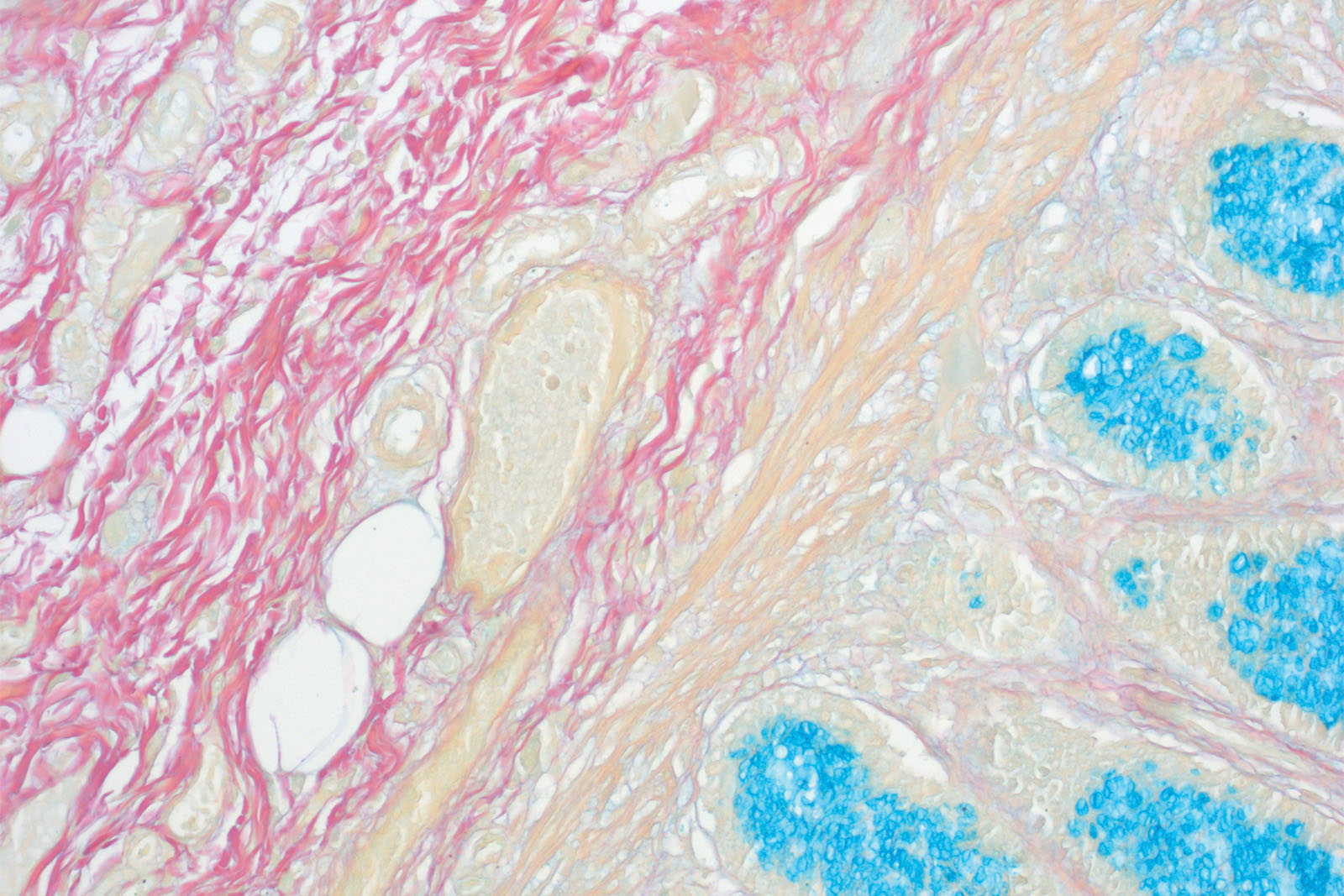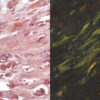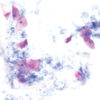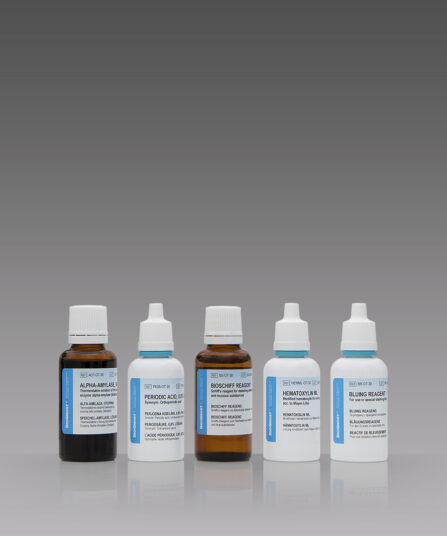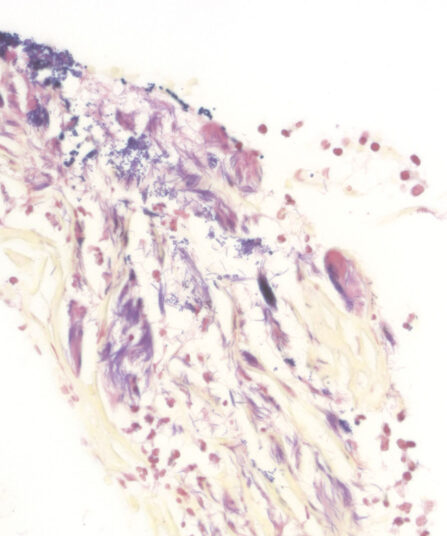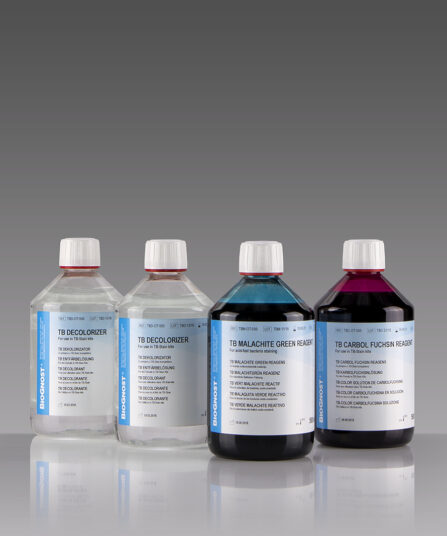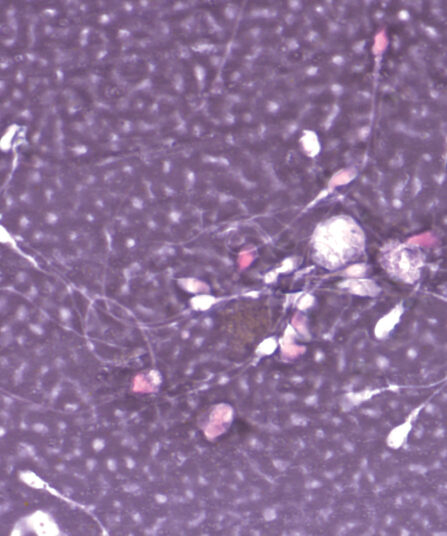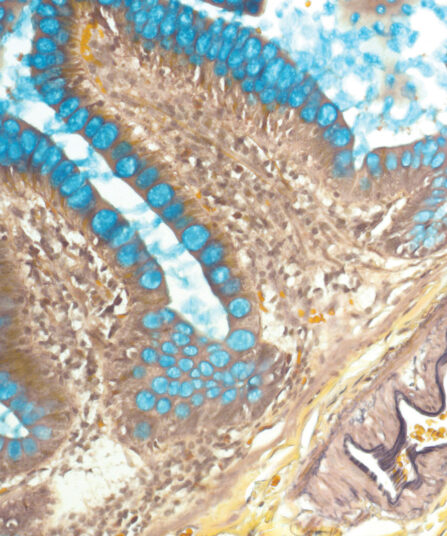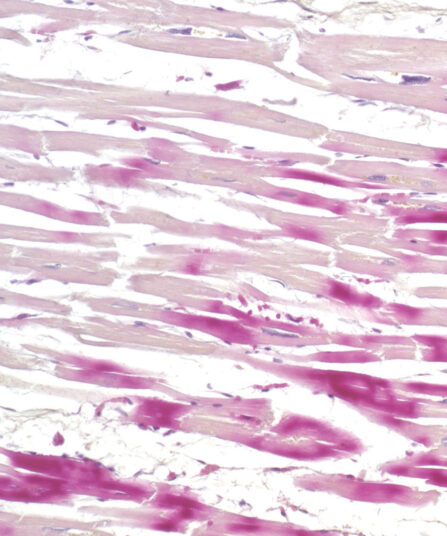The Colloidal Iron kit is used for visualisation of carboxylated and sulphated groups of acid mucins and proteoglycans. This method is based on the principle of binding positively charged ferric ions (Fe3+) to negatively charged endings of acid mucopolysaccharides and proteoglycans. Excessive reagents are rinsed while the bound ferric ions get visualised using the Prussian Blue reaction. In this reaction potassium ferrocyanide causes light blue precipitations of iron ferrocyanide to appear. Finally, the sections are exposed to Van Gieson stain that selectively stains different tissue structures and in turn creates clear and visually rich contrast. The method can be combined with the PAS method; that way glycogen and neutral mucopolysaccharides would get differentially stained characteristically magenta.
Colloidal Iron kit
Six-reagent kit used for visualisation of carboxylated and sulphated groups of acid mucopolysaccharides and proteoglycans. This method can be combined with the PAS method; that way glycogen and neutral mucopolysaccharides would get differentially stained characteristically magenta.
Description
Additional information
| Size | |
|---|---|
| Brand | |
| Stain pack | |
| Stain Category | Carbohydrates |
Related products
Stain Kits
P.A.S. Diastase Kit
BioGnost’s P.A.S. Diastase kit is most commonly used for identifying glycogen in liver. Periodic acid enables the molecules containing glycol groups to create aldehydes affected by Schiff’s reagent staining them violet (magenta). Specific stains are created by applying the PAS method on unsubsti-tuted polysaccharides, mucoproteins and glycoproteins, glycolipids and phospholipids. Alpha-amylase enzyme (also known as diastasis) is used for differentiation between glycogen and other PAS-positive structures by dissolving 1→4 glycosidic bonds, causing the glycogen to remain unstained after the PAS reaction. BioGnost’s P.A.S. Diastase kit uses thermostable enzyme which does not require heating to +37°C to be active, but incubat-ing the section at +37°C is preferred in order to achieve better glycogen breakdown. The same tissue section is used as negative control for this reaction, but the sample is not treated using alpha-amylase.
For 100 tests.
Stain Kits
BioGram Histo kit
Five-reagent kit for identification of bacteria according to Gram. For differentiation between Gram-positive and Gram-negative bacteria in histology sections.
Stain Kits
TB-Stain Fluorescent Kit
Three-reagent kit for fluorescence-microscopic detection of acid-fast bacteria. Contains TB Auramine-Rhodamine reagent, double amount of TB Decolorizer Fluorescent and TB Permanganate reagent as counterstain.
4 x 100ml bottles.
Stain Kits
TB-Stain Cold Kit
Three-reagent kit for staining acid-fast bacteria according to Kinyoun. Contains TB Carbol Fuchsin reagent, double amount of TB Decolorizer and TB Malachite Green reagent as counterstain.
4 x 100ml bottles.
Stains Reagents And Dyes
Rapid Romanowsky (Diff Quik) Stain Kit 3×0.5L
Stain Kits
Eosin-Nigrosin Vital
Fast detection (one-step detection) of sperm vitality and visualisation of dead and living sperm cells with one reagent. A simple, easy and fast method for semen analysis.
Stain Kits
Movat kit
Ten-reagent kit for staining collagen, elastic and muscle fibres, mucin and fibrin in tissue section. Movat kit is particularly useful when examining heart and vascular diseases.
Stain Kits
H.B.F.P. kit
Three-reagent Hematoxylin-Basic Fuchsin-Picric acid staining kit for detection of cardiac muscle changes after ischemia or myocardial infarction. H.B.F.P. kit is a non-enzymatic histochemical technique for detection of early myocardial ischemia with vivid contrast.

